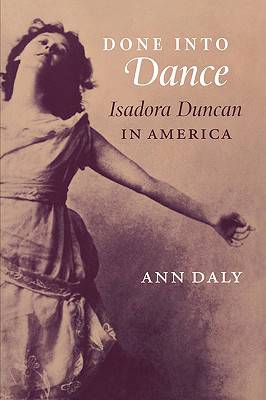
Door een staking bij bpost kan je online bestelling op dit moment iets langer onderweg zijn dan voorzien. Dringend iets nodig? Onze winkels ontvangen jou met open armen!
- Afhalen na 1 uur in een winkel met voorraad
- Gratis thuislevering in België vanaf € 30
- Ruim aanbod met 7 miljoen producten
Door een staking bij bpost kan je online bestelling op dit moment iets langer onderweg zijn dan voorzien. Dringend iets nodig? Onze winkels ontvangen jou met open armen!
- Afhalen na 1 uur in een winkel met voorraad
- Gratis thuislevering in België vanaf € 30
- Ruim aanbod met 7 miljoen producten
Zoeken
Omschrijving
This cultural study of modern dance icon Isadora Duncan is the first to place her within the thought, politics and art of her time. Duncan's dancing earned her international fame and influenced generations of American girls and women, yet the romantic myth that surrounds her has left some questions unanswered: What did her audiences see on stage, and how did they respond? What dreams and fears of theirs did she play out? Why, in short, was Duncan's dancing so compelling? First published in 1995 and now back in print, Done into Dance reveals Duncan enmeshed in social and cultural currents of her time - the moralism of the Progressive Era, the artistic radicalism of prewar Greenwich Village, the xenophobia of the 1920s, her association with feminism and her racial notion of "Americanness."
Specificaties
Betrokkenen
- Auteur(s):
- Uitgeverij:
Inhoud
- Aantal bladzijden:
- 288
- Taal:
- Engels
Eigenschappen
- Productcode (EAN):
- 9780819565600
- Verschijningsdatum:
- 1/10/2002
- Uitvoering:
- Paperback
- Formaat:
- Trade paperback (VS)
- Afmetingen:
- 153 mm x 238 mm
- Gewicht:
- 444 g

Alleen bij Standaard Boekhandel
+ 86 punten op je klantenkaart van Standaard Boekhandel
Beoordelingen
We publiceren alleen reviews die voldoen aan de voorwaarden voor reviews. Bekijk onze voorwaarden voor reviews.











